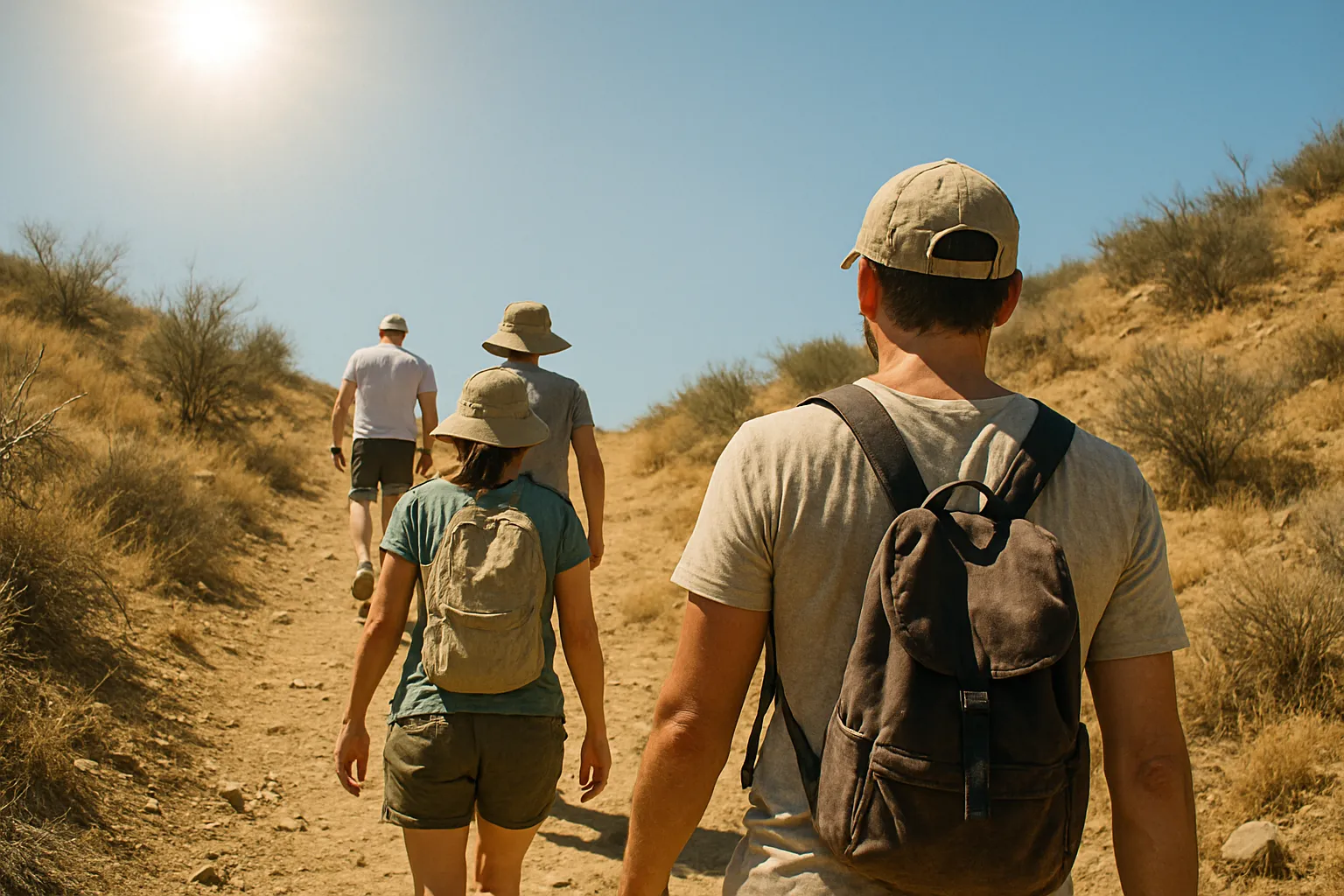Whether you're planning a summer trek through desert landscapes or tackling sun-drenched mountain trails, knowing how to hike in hot weather is essential for your safety and enjoyment. At The National Park Shops, we are passionate about equipping adventurers with the right knowledge and gear to face extreme conditions confidently. This guide will walk you through practical strategies and expert tips on how to hike in hot weather, from preparation to gear selection. Stay safe, stay hydrated, and make the most of your outdoor adventures, no matter how high the temperature climbs. Here's everything you need to know to hike smart in the summer heat.
What happens when we hike in Hot Weather?
When you embark on a trail in scorching temperatures, your body experiences a series of physiological changes that demand caution and preparation. Hiking in hot weather triggers an increase in your heart rate and core body temperature as your body works hard to regulate heat. Prolonged exposure to intense sunlight can cause dehydration and electrolyte imbalance, increasing your risk of heat exhaustion or even heatstroke. Understanding how to hike in hot weather involves recognizing these signs early and taking preventative measures. Ignoring the warning signs can lead to life-threatening situations in remote hiking locations where help is not readily available.
The intense heat also affects the environment around you, with wildlife more active at dawn and dusk when temperatures are lower. This activity shift means hikers are more likely to encounter animals such as snakes, which seek cooler surfaces during the hottest parts of the day. In addition, the ground and rocks can become dangerously hot, leading to burns if touched accidentally. Learning how to hike in hot weather prepares you to navigate these risks confidently and safely. Proper preparation and awareness are essential when hiking under the sun's relentless heat.
Muscle fatigue can set in more quickly when you're hiking in hot weather, as your body diverts energy toward cooling mechanisms rather than maintaining stamina. Sweating profusely can also cause your clothes and gear to become saturated, adding extra weight and discomfort. Knowing how to hike in hot weather includes selecting appropriate gear that mitigates these effects and enhances your comfort. These challenges highlight why heat is one of the most underestimated threats in outdoor adventures. Planning accordingly transforms a hazardous hike into an enjoyable and safe experience.
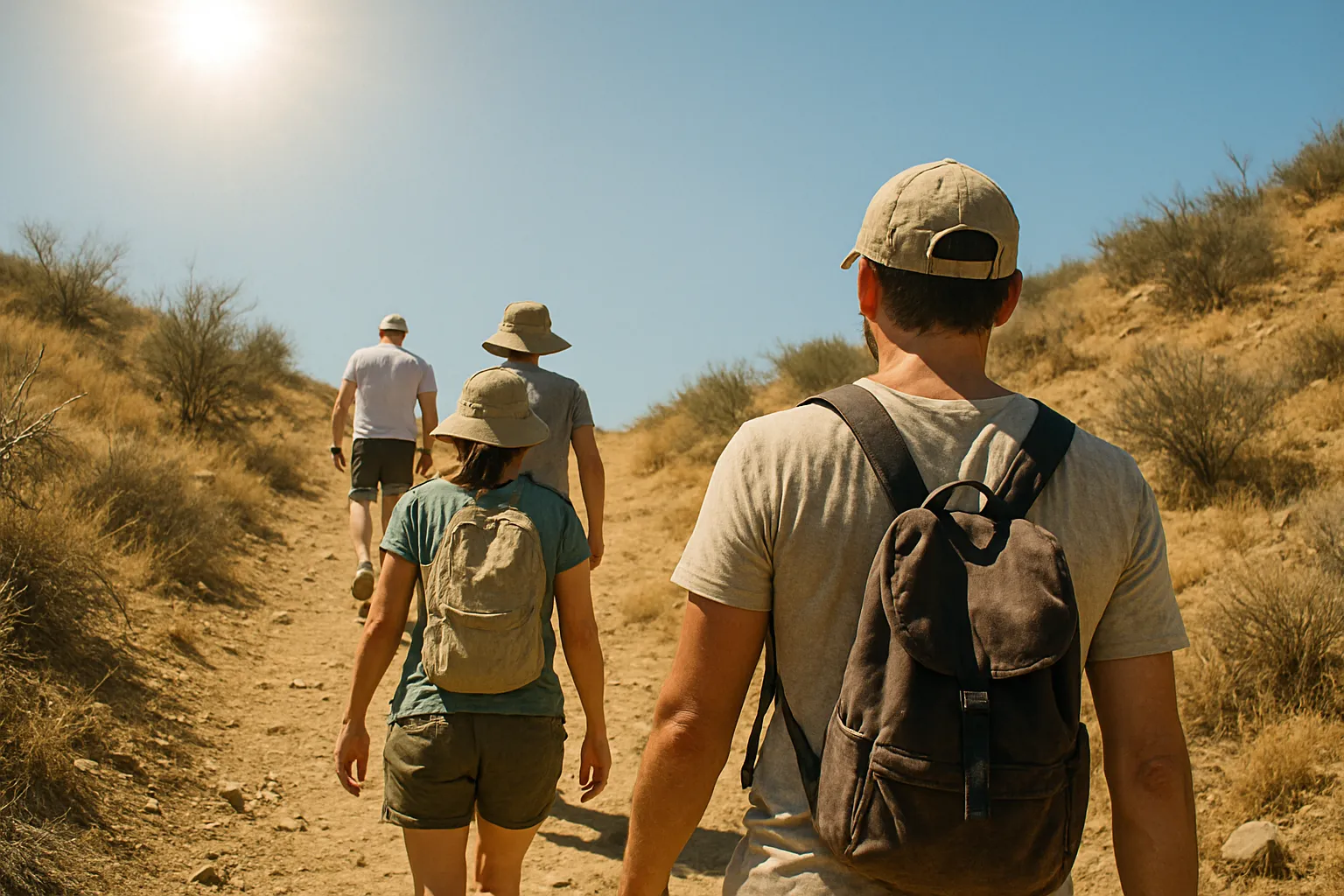
How to hike in hot weather?
Check the weather
Before setting out, always check the forecast to prepare for the conditions you'll face. Knowing how to hike in hot weather starts with understanding temperature predictions, humidity levels, and heat advisories. Pay special attention to any warnings about extreme heat or sudden weather changes that could impact your safety. Being informed allows you to adjust your plans and gear to match the environment you'll be navigating. Awareness of the forecast is the first step toward a successful and safe hike in the heat.
Checking the hourly temperature breakdown can help you identify the coolest parts of the day for your hike. Learning how to hike in hot weather means timing your activity to avoid peak sun exposure between 11 a.m. and 3 p.m. Additionally, monitoring wind speeds and UV index ratings can guide your decisions on sun protection and hydration needs. Make weather monitoring part of your pre-hike checklist. This proactive approach ensures you're ready for the elements and can make safe choices on the trail.
Plan your hike
Effective planning is critical when learning how to hike in hot weather, as it reduces the risks associated with extreme heat. Choose a trail suited to your fitness level and the weather conditions, favoring shaded paths and moderate elevations. Mark waypoints where you can rest, refill water, and seek shelter if needed. Proper planning also involves sharing your itinerary with someone who can initiate help if you don't return on time. These precautions create a safety net that protects you in harsh environments.
Study the trail map carefully to estimate your hiking duration and the energy demands of the terrain. Knowing how to hike in hot weather involves choosing routes that minimize sun exposure and physical strain. It's wise to have an exit strategy in case the heat becomes unbearable or you encounter unforeseen obstacles. Carrying navigation tools, such as a GPS device or a detailed map, will help you stay on course and prevent getting lost. A well-planned hike significantly lowers the danger of heat-related illnesses.
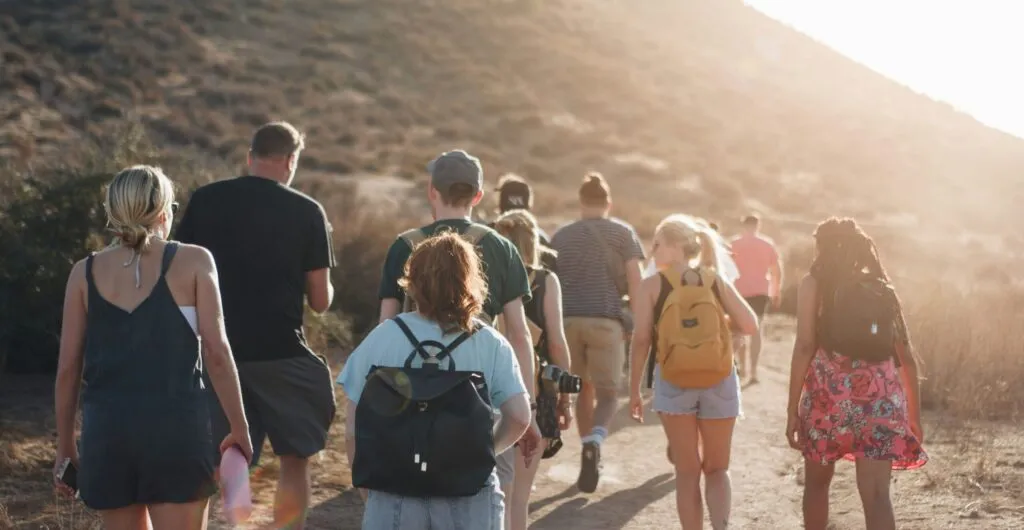
Be flexible
Flexibility is a vital skill when you're figuring out how to hike in hot weather. Despite the best-laid plans, conditions can change unexpectedly, requiring you to adapt your schedule or route. If the heat feels overwhelming or your energy wanes, shorten your hike or turn back early. Prioritizing your safety over reaching your destination is a mark of responsible hiking. This mindset prevents accidents and ensures you'll be able to hike another day.
Being flexible also means listening to your body and respecting its limits. One of the most important lessons in how to hike in hot weather is knowing when to rest and when to call it a day. Carrying extra supplies, such as electrolyte tablets and cooling towels, can give you options if the hike takes longer than expected. Adjusting your pace, route, or goals based on the situation keeps your experience enjoyable rather than dangerous. Adaptability is one of the most powerful tools a hiker can possess.
Choose trails with water
Choosing trails near lakes, rivers, or streams is an excellent strategy for those learning how to hike in hot weather. Water sources not only provide cooling opportunities but also offer scenic resting spots that break up the intensity of the heat. Trails with water features often have more shade and cooler microclimates, making your journey more pleasant. These natural resources serve as both safety measures and morale boosters during a hot-weather hike. Prioritize these trails whenever possible to minimize heat-related risks.
Stopping to cool off in a shaded stream or dampening your clothes can help regulate your body temperature. Knowing how to hike in hot weather means leveraging these environmental advantages to stay safe and comfortable. However, always verify the safety and accessibility of water sources before your hike, as some may dry up in extreme heat. Carrying a map that marks reliable water points is a wise precaution. Water-adjacent trails are your allies against the summer sun.
Bring enough water
Hydration is the cornerstone of learning how to hike in hot weather, and bringing enough water is non-negotiable. Experts recommend carrying at least one liter of water per hour of hiking in extreme heat. Start your hike already well-hydrated and take small sips frequently rather than waiting until you're thirsty. This proactive hydration approach helps maintain your body's cooling systems efficiently. Running out of water can quickly escalate into a dangerous situation in hot conditions.
Use insulated bottles or hydration bladders to keep your water cool throughout the hike. Knowing how to hike in hot weather also involves understanding your personal hydration needs, which may increase with exertion and sun exposure. Supplementing your water intake with electrolyte-rich drinks can prevent imbalances that lead to cramps or dizziness. Make hydration breaks a regular part of your hiking rhythm. Prioritizing water is the simplest and most effective way to beat the heat.
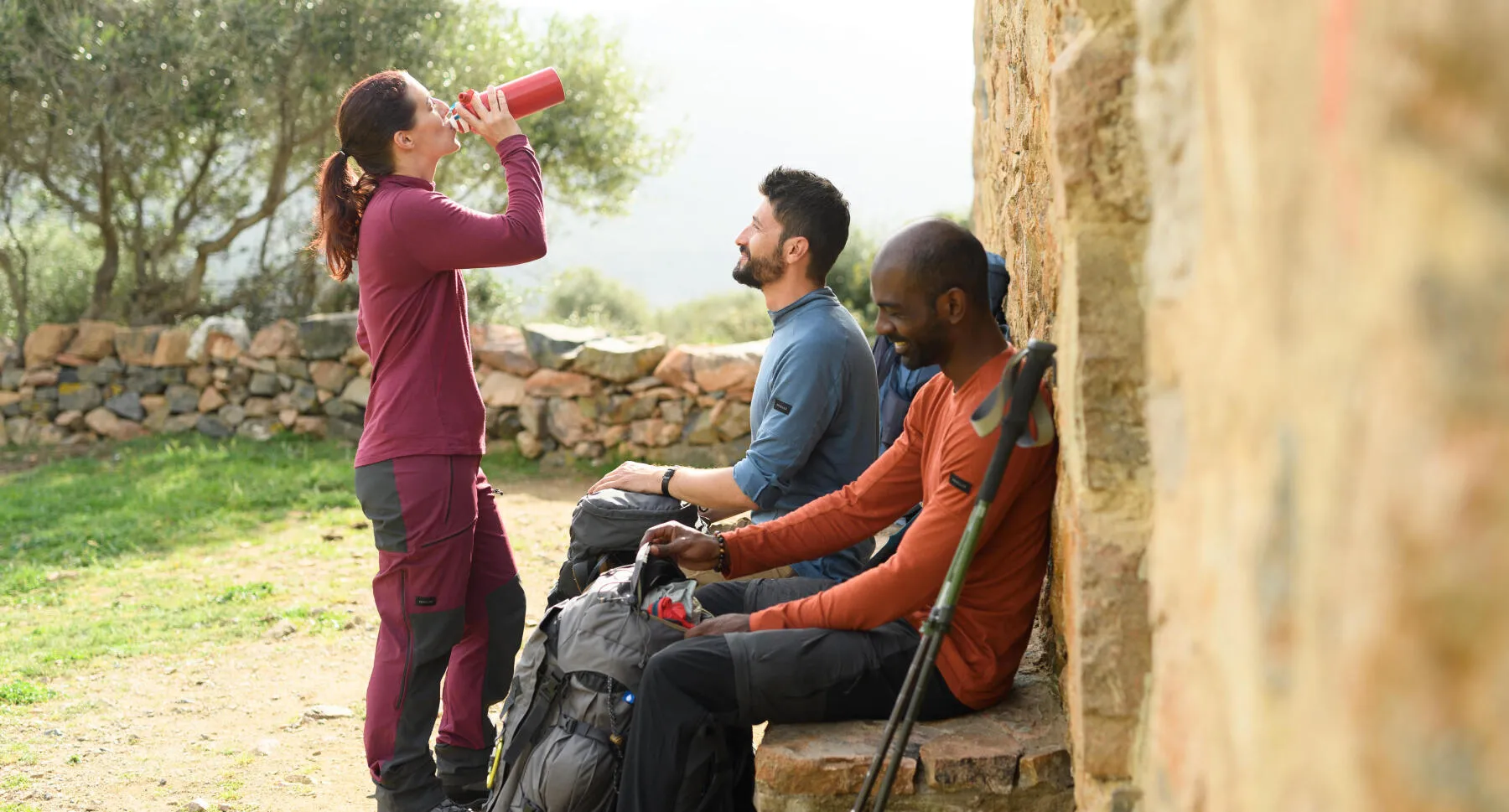
Bring a water purifier
Carrying a portable water purifier is a smart safety net when learning how to hike in hot weather. Even if you plan your water supply meticulously, unexpected delays or higher consumption rates can deplete your reserves. Having a water purifier allows you to safely drink from natural water sources like streams and lakes. This gear expands your hydration options and adds peace of mind during your hike. Lightweight and easy to use, purifiers are a must-have for hot-weather adventures.
Selecting the right water purifier depends on the environment you'll be hiking in. Understanding how to hike in hot weather includes researching whether the local water sources are prone to bacterial contamination or chemical pollutants. Options range from pump filters and UV purifiers to simple chemical tablets. Practice using your purifier before your hike to ensure you're comfortable with the process. Reliable water purification is a vital backup when heat depletes your water faster than anticipated.
Go early or late if you can
Timing your hike for the cooler parts of the day is a key tactic in learning how to hike in hot weather. Start your trek early in the morning or in the late afternoon to avoid the intense midday heat. These windows offer lower temperatures, less direct sun, and a quieter trail experience. Early or late hikes also align with wildlife activity, giving you a better chance to enjoy nature at its most vibrant. Smart timing enhances both safety and enjoyment.
Adjusting your schedule requires careful planning, especially in remote areas where daylight is limited. Knowing how to hike in hot weather means balancing the benefits of cooler temperatures with the need for sufficient visibility. Pack a headlamp if your hike extends into dusk, and familiarize yourself with the trail's features in advance. This strategy not only reduces heat exposure but also helps you conserve energy. Avoiding peak heat hours is one of the simplest ways to stay safe.
Wear a hat
Wearing a hat is one of the most effective personal protection methods when learning how to hike in hot weather. A wide-brimmed hat shields your face, neck, and ears from harmful UV rays, reducing the risk of sunburn. Breathable, moisture-wicking materials help keep your head cool while providing essential shade. This simple accessory makes a significant difference in your overall comfort and safety during a hot-weather hike. Prioritize function over fashion when selecting your hiking hat.
A well-chosen hat complements your other sun protection strategies, such as sunscreen and sunglasses. Knowing how to hike in hot weather includes creating a multi-layered defense against sun exposure. Consider hats with ventilation panels or neck flaps for added cooling and protection. Keep your hat on during rest breaks to maintain shade coverage. A quality hat is an indispensable part of your hot-weather hiking gear.
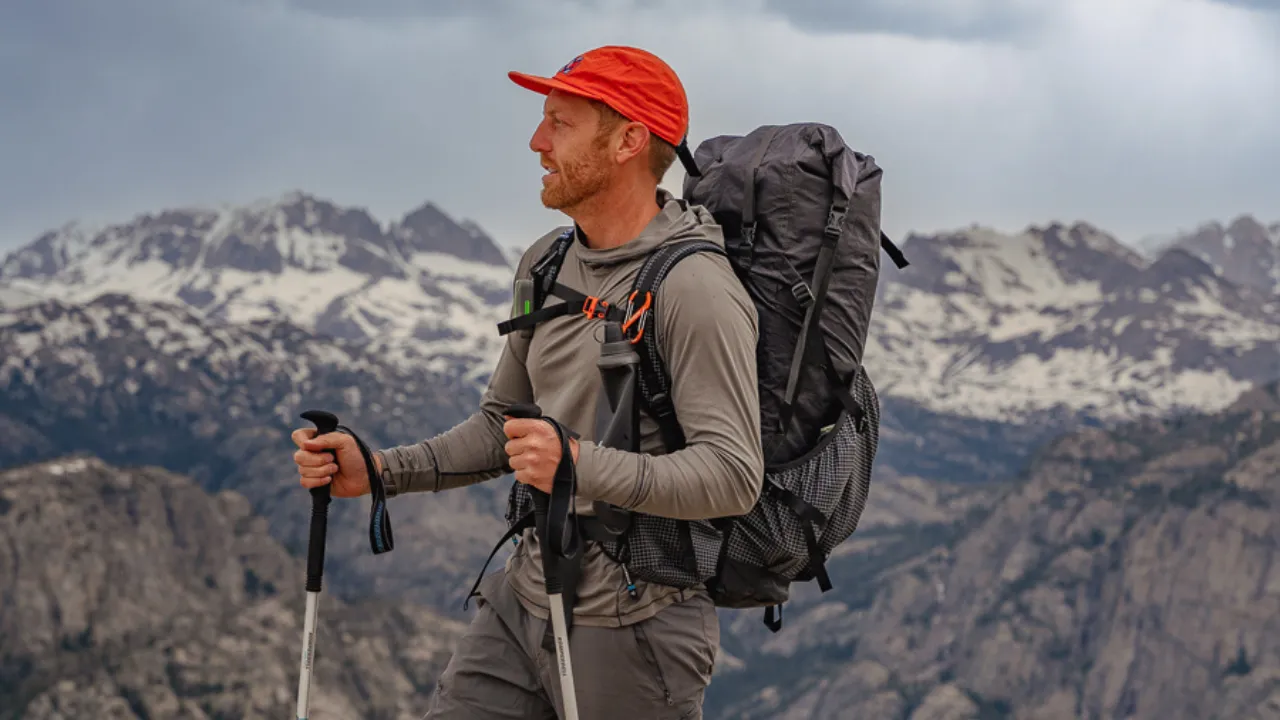
Wear sunscreen
Applying sunscreen is critical for anyone learning how to hike in hot weather, as UV rays are stronger at higher elevations and in open spaces. Choose a broad-spectrum sunscreen with an SPF of at least 30 and reapply it every two hours, or more often if sweating heavily. Cover all exposed skin, including often-missed areas like your ears, neck, and the backs of your hands. Sunscreen helps prevent painful burns and long-term skin damage. Consistent application is key to effective protection.
Carrying a travel-sized sunscreen in your pack ensures you can reapply easily during your hike. Knowing how to hike in hot weather also means choosing water-resistant formulas that won't wash away with sweat. Pair sunscreen with protective clothing and a hat for comprehensive coverage. Don't overlook your lips—use a lip balm with SPF protection. Sunscreen is your frontline defense against the sun's harmful effects.
Wear the right clothes
Wearing the right clothing is essential when learning how to hike in hot weather, as your outfit can either trap heat or help release it. Choose light-colored, loose-fitting, and moisture-wicking fabrics that promote ventilation and quick drying. Synthetic materials and merino wool are excellent choices for their breathability and comfort in heat. Avoid dark colors and heavy fabrics that absorb sunlight and restrict airflow. Dressing appropriately helps regulate your body temperature effectively.
Consider clothing with built-in UV protection for an added layer of defense. Understanding how to hike in hot weather includes layering strategically—long sleeves and pants can actually keep you cooler by shielding your skin from direct sun. Look for features like mesh panels, roll-up sleeves, and zip-off pants for adaptability. Test your gear on shorter hikes to ensure it performs well under heat stress. The right clothes make a noticeable difference in how you experience the trail.
Walk slowly
Pacing yourself is crucial when learning how to hike in hot weather, as overexertion increases your risk of heat exhaustion. Walk at a slower, steady pace that allows you to conserve energy and maintain hydration levels. Taking your time helps prevent overheating and reduces the strain on your cardiovascular system. Listen to your body—if you feel dizzy or excessively fatigued, slow down or rest. Hiking is not a race, especially in extreme heat.
Adjust your expectations and allow for longer completion times in hot weather. Knowing how to hike in hot weather means prioritizing steady progress over speed. Use your breaks to cool down, rehydrate, and reassess your condition. Encourage your hiking companions to adopt the same pace and attitude toward safety. Slow and steady truly wins the race in high temperatures.
Rest often
Frequent rest breaks are an essential part of learning how to hike in hot weather. Stop every 20 to 30 minutes to cool off, drink water, and evaluate how you're feeling. Find shaded areas or create your own with a lightweight tarp to escape the sun's intensity. Regular rests help your body recover and prevent the accumulation of heat stress. Incorporate rest stops into your hiking plan from the outset.
Take these opportunities to stretch, adjust your gear, and enjoy the scenery. Understanding how to hike in hot weather means balancing physical effort with recovery time. Encourage group members to speak up if they need a break, creating a supportive and safety-conscious environment. Never push through fatigue in extreme heat. Frequent, mindful breaks are your ally in staying safe and refreshed.
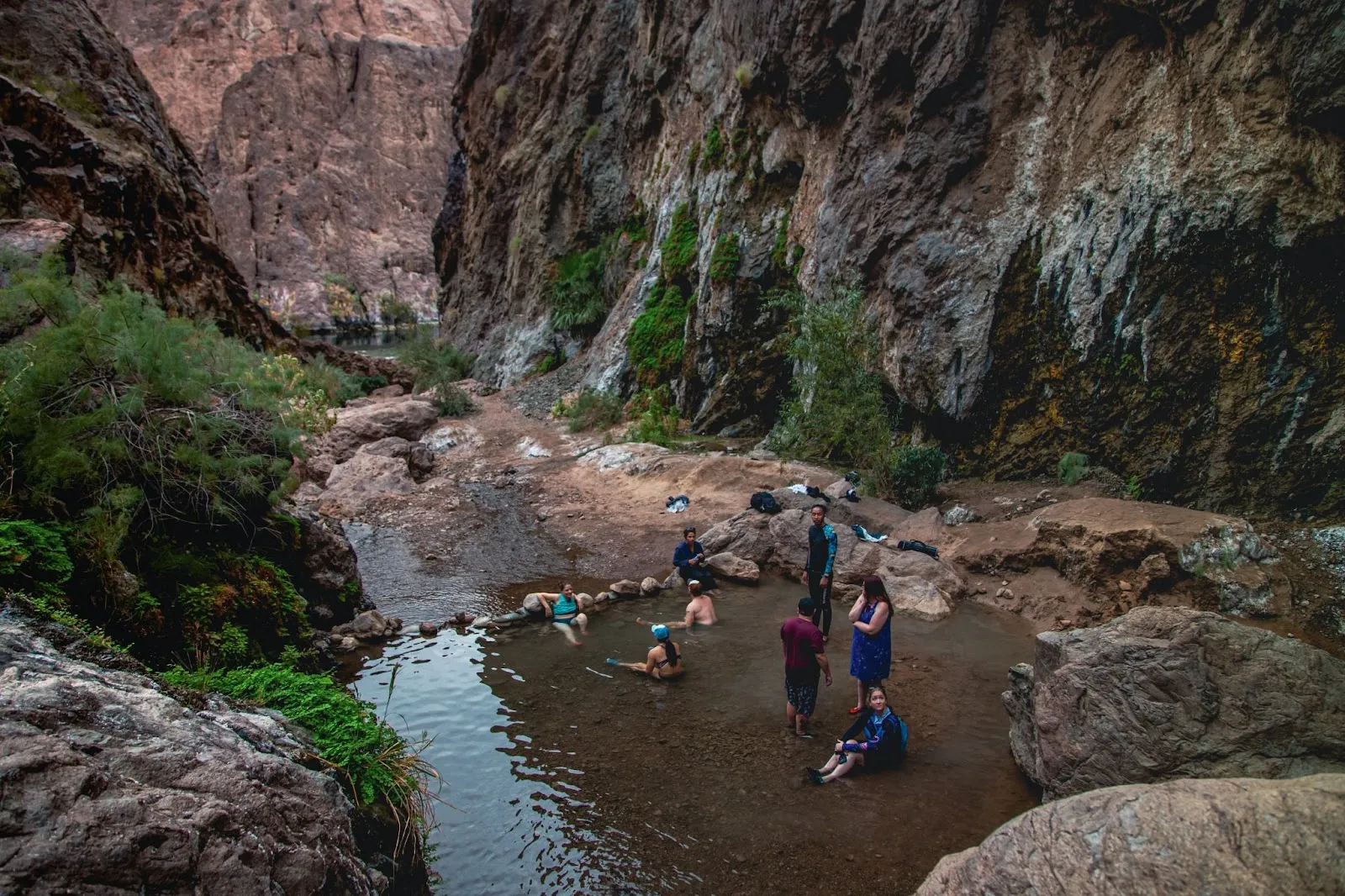
Keep alert for bushfire danger too
Staying alert to bushfire risks is another important consideration when learning how to hike in hot weather. Dry, hot conditions can rapidly escalate fire hazards, especially in forested or grassy areas. Before your hike, check for fire bans, warnings, and active bushfires in your region. If smoke is visible or the heat is extreme, postpone your trip to avoid danger. Vigilance protects both your safety and the environment.
Carry a fully charged phone or a two-way radio to receive emergency updates during your hike. Knowing how to hike in hot weather also includes planning escape routes in case of fire. Avoid hiking on high-risk days, and steer clear of dry vegetation that could ignite easily. Your awareness can make the difference between a safe hike and a life-threatening emergency. Prioritize safety over adventure in fire-prone regions.
Snake season
Summer heat increases snake activity, making it essential to stay vigilant when learning how to hike in hot weather. Snakes seek cooler spots in the heat of the day and may be found near water sources or shaded trail edges. Wear high boots and keep to well-trodden paths to reduce your chances of an encounter. Remain calm and back away slowly if you spot a snake—never attempt to touch or provoke it. Snake awareness is a vital part of safe hot-weather hiking.
Carry a snake bite first aid kit and familiarize yourself with the symptoms of venomous bites. Knowing how to hike in hot weather includes understanding local wildlife patterns and being prepared for emergencies. Travel with companions whenever possible and educate yourself about the snakes native to your hiking region. Vigilance and preparedness minimize the risks associated with snake season. Respect wildlife and share the trail safely.
Conclusion
Mastering how to hike in hot weather is about preparation, awareness, and respect for your environment. By checking the forecast, planning your route, and timing your hike wisely, you minimize the risks posed by extreme heat. Wearing the right gear, staying hydrated, and resting frequently will keep your body functioning optimally. Learning how to hike in hot weather also involves being adaptable and recognizing when to turn back for safety. With the right precautions, you can enjoy the beauty of summer hiking while protecting your health and well-being.
The more you practice these heat-smart strategies, the more confident and resilient you'll become. Over time, learning how to hike in hot weather transforms from a challenge into an empowering experience. Stay alert to your surroundings, respect your physical limits, and enjoy the incredible landscapes that summer trails have to offer. Hiking in hot weather doesn't have to be a hazard when you're equipped with the right knowledge and mindset. Safe and enjoyable hikes await those who prepare wisely.

